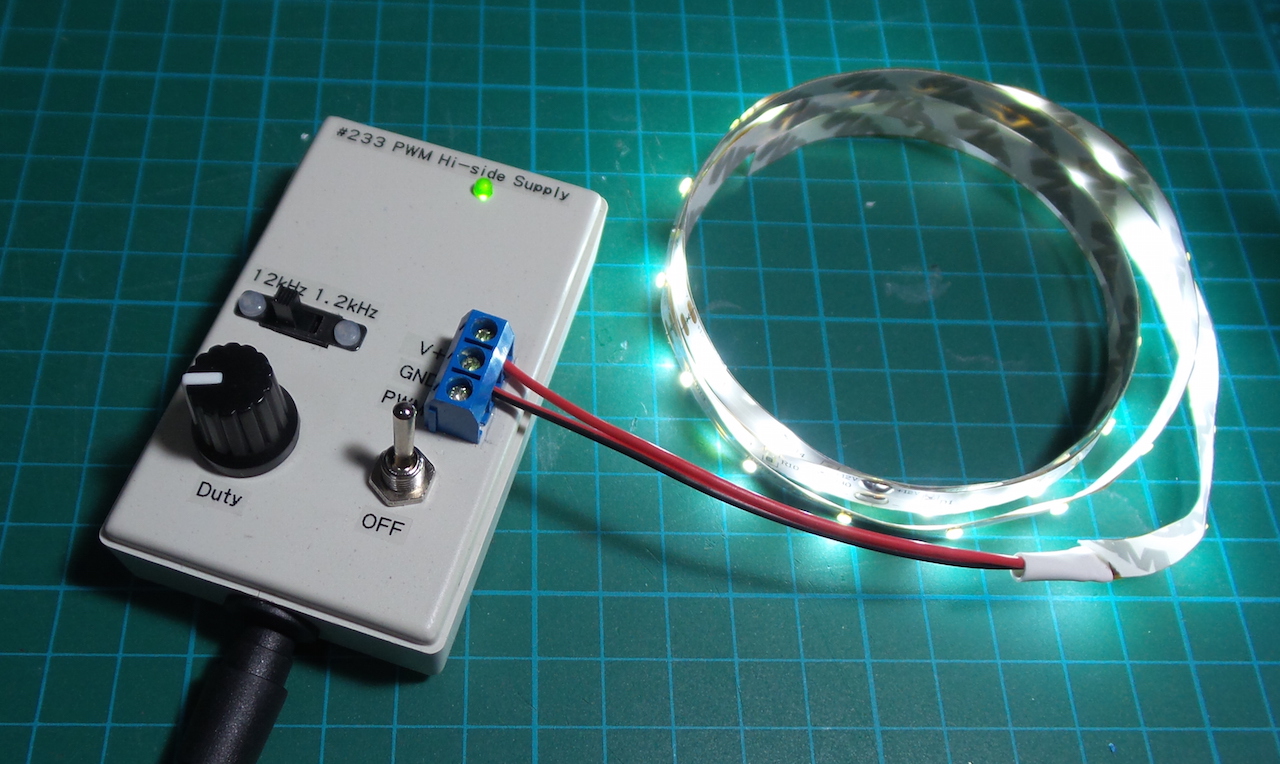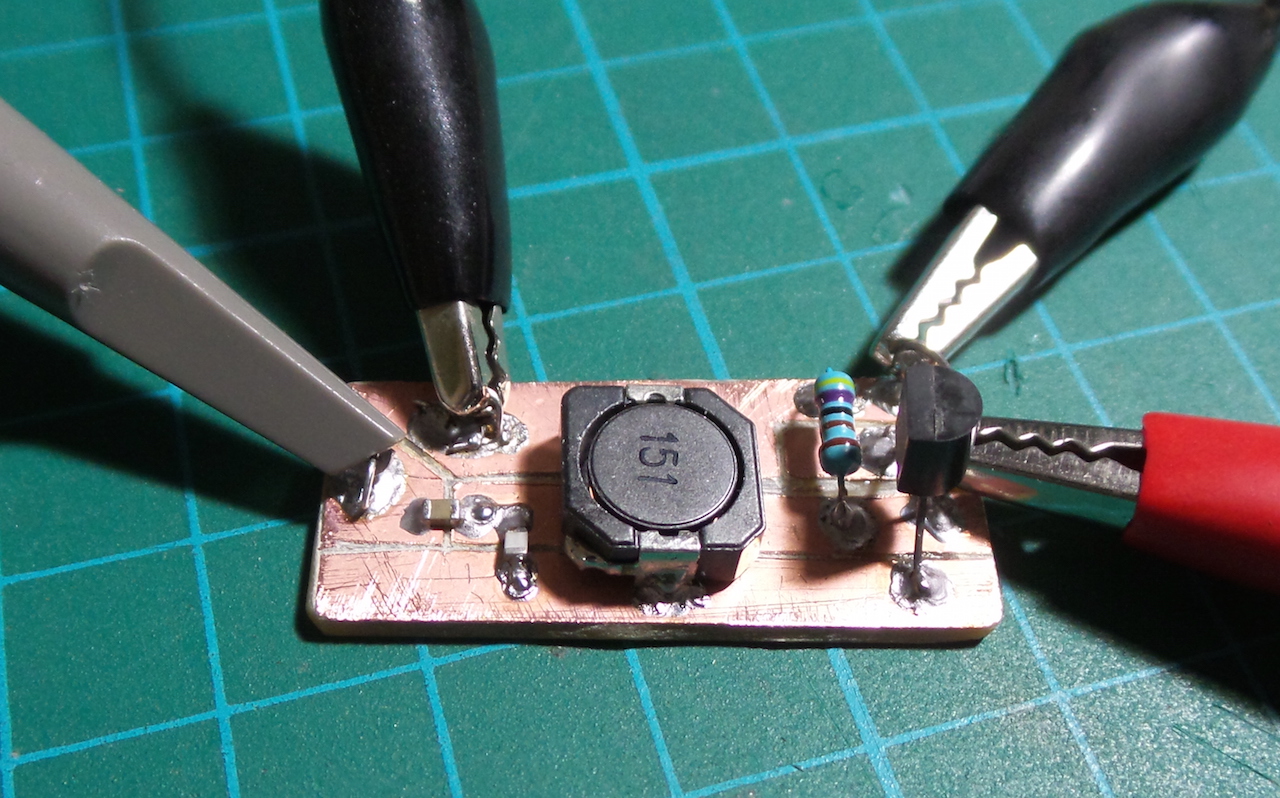LEAP#233 Hi-side PWM Controller
This circuit cobines a variable-duty cycle PWM generator with a high-side p-channel MOSFET driver circuit,
making it suitable for controlling loads up to 15V/23A.
As always, all notes, schematics and code are in the Little Electronics & Arduino Projects repo on GitHub

read more and comment..
LEAP#232 LED Dimmer PWM
In LEAP#231 I claimed current control was better
than PWM especially for flicker-free low light levels. But is that true?
In this project I test a simple 555 Timer-based PWM dimmer for comparison’s sake.
As always, all notes, schematics and code are in the Little Electronics & Arduino Projects repo on GitHub

And yes, of course it flickers. Whether that is noticable or annoying depends on the frequency.
Now perhaps some flicker might be a Very Good Thing, if the research discussed in this RadioLab episode bears up in practice. But flicker should still be something you explicitly design to have or eliminate.
read more and comment..
LEAP#231 LED Dimmer (current regulator)
I was looking at some alternatives for dimming a 12V LED strip. This circuit is by Jim Keith at electroschematics.
Rather than using PWM, this circuit controls the current and provides better flicker-free lighting even when dimmed.
Very nice!
 As always, all notes, schematics and code are in the Little Electronics & Arduino Projects repo on GitHub
As always, all notes, schematics and code are in the Little Electronics & Arduino Projects repo on GitHub
read more and comment..
LEAP#230 Minimal LC Oscillator
I borrowed this idea and circuit design from stoneslice’s 1MHz Oscillator video.
I tested a range of components across a range of frequencies from 1.5MHz to 2.9MHz.
As always, all notes, schematics and code are in the Little Electronics & Arduino Projects repo on GitHub

read more and comment..
